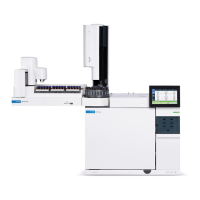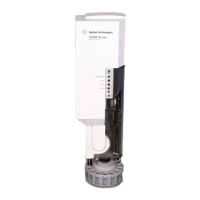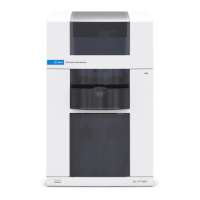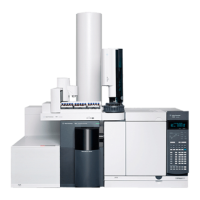Preparing for Operation
Preparing the solvent and waste bottles
47
1. Go to the S table in Figure 32. In the left-hand column, find the largest
number of solvent washes you need from a solvent bottle, answer (3).
2. Read across this row to the column indicating the number of injections
you are taking from each vial, answer (2).
The intersection of row and column is the maximum number of vials that
you can run from the limiting bottle, answer (41).
3. Go to the W table in Figure 33. In the left-hand column, find the number of
solvent and sample washes you need, answer (7).
4. Read across this row to the column indicating the number of injections
you are making from each vial, answer (2).
The intersection of row and column is the maximum number of vials for
one bottle, answer (35).
• Because a tray is installed, multiply the maximum number of vials
listed in the table by 2, answer (70).
5. Compare the answers from both tables. Use the smaller of the two
answers for the maximum vial estimate, answer (41).
Controlling sample carryover
This section describes the features of the injector used to control carryover.
For an explanation of sample carryover, see the Glossary.
You can use solvent washes, sample washes, and pumps to control carryover
because each dilutes the concentration of sample left in the syringe. The
effectiveness of each depends on your application.
You may be able to adjust your application for a more efficient use of solvent
and sample and increase the number of sample vials you can run at one time.
• Solvent washes
The injector fills the syringe to eight-tenths of its volume (4 µl with the 5-µl
syringe and 8 µl with the 10-µl syringe) from either the solvent A or solvent
B position. Then it dispenses the syringe contents into one of the waste
bottles. Solvent washes can be set to occur before taking a sample
(preinjection solvent wash) or immediately after the injection
(postinjection solvent wash).
